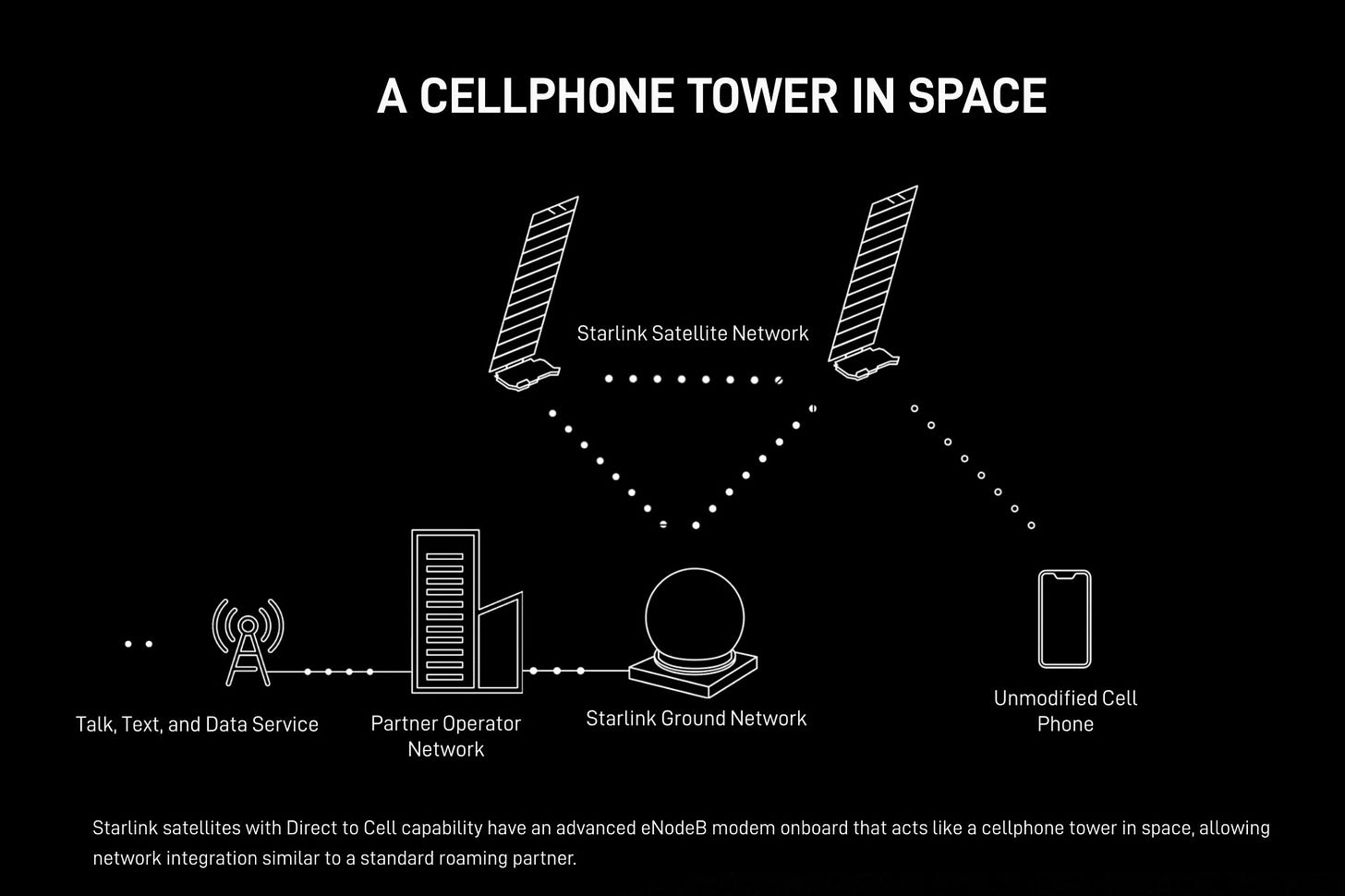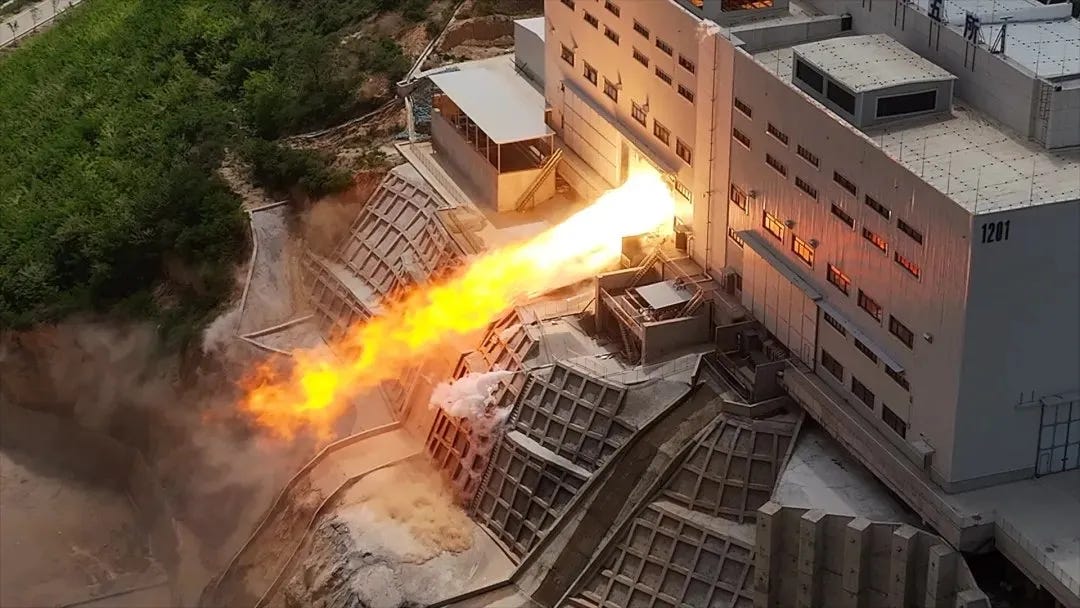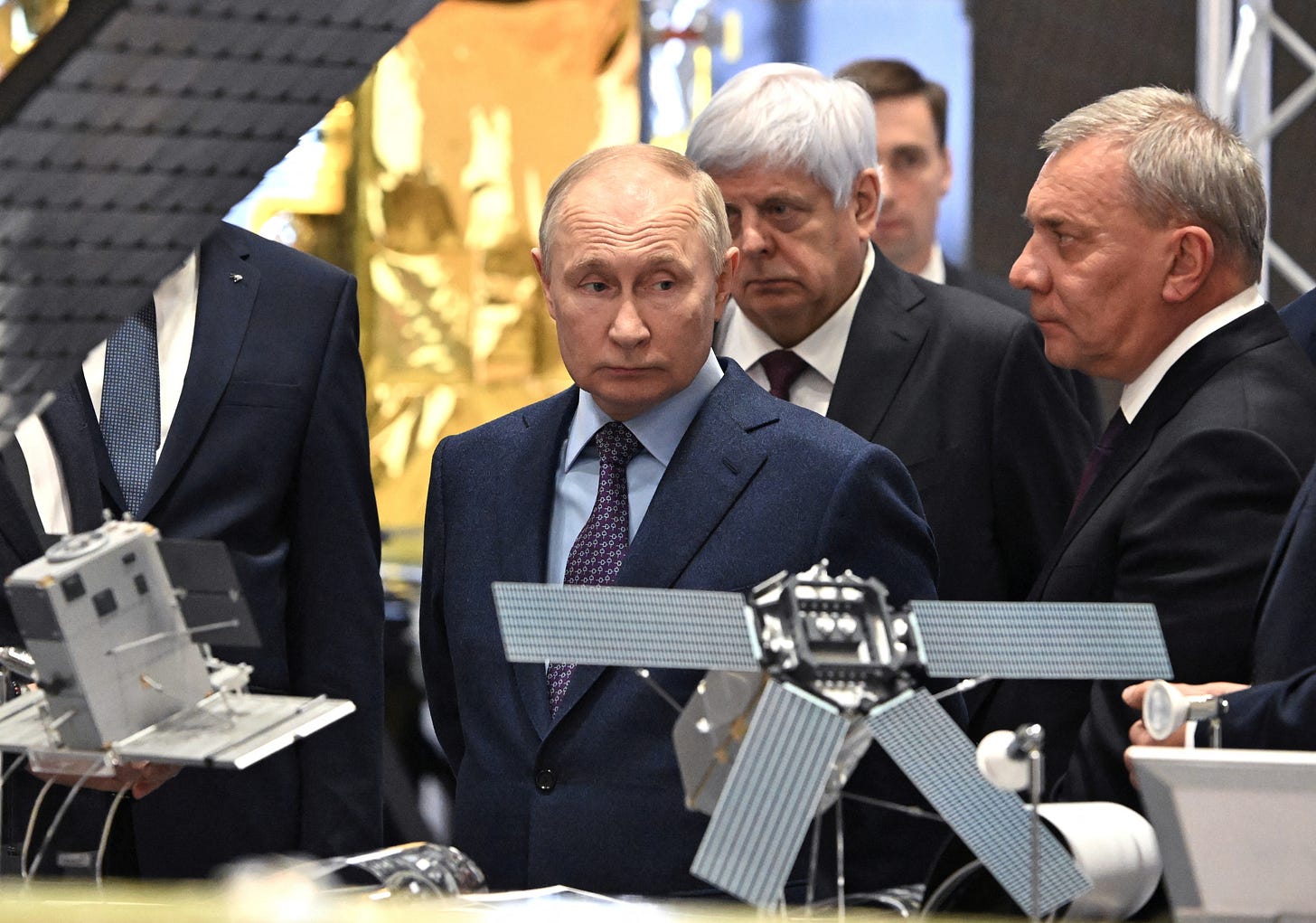This Week in Launch – #1
Starlink's $17 billion deal, Beijing vs. Washington heats up, and more
Welcome to the first issue of This Week in Launch, a roundup of space-related news posted at the end of each week.
Thank you for joining me! Let’s dive in.
Starlink Money Printer Gets $17 Billion Upgrade
On Monday, September 8, SpaceX announced an $8.5 billion cash and $8.5 billion stock deal for EchoStar's AWS-4 and H-block spectrum licenses. "The next generation of Starlink Direct to Cell satellites will be designed to fully utilize this spectrum," said SpaceX in a blog post.
EchoStar’s business has been suffering for years due to declining consumer interest. In May 2025, the debt-ridden company was preparing to file for bankruptcy while facing an FCC probe — initiated by SpaceX's complaint — into whether it was meeting 5G deployment requirements to keep its spectrum licenses (it wasn’t).
The sales, including $23 billion to AT&T on August 26, ended the FCC investigation on September 9. These deals also killed EchoStar's LEO constellation plans, terminating its $2.5 billion satellite contract with MDA Space for 200 satellites.
Starship vs. Nudists
After ending a three-flight losing streak with successful Flight 10 last month, Starship scored a court win too. A May 2023 lawsuit by environmentalists against the FAA over Boca Chica wildlife impacts was dismissed on September 16. This removes a key regulatory barrier for the company, allowing for continued launch expansion in South Texas.
In Florida, nudists are opposing SpaceX's $1.8 billion expansion of its Starship program at Kennedy Space Center. The company plans Starship flights as soon as later this year (though 2026 is more likely). The FAA's draft Environmental Impact Statement, released on August 6 for Launch Complex 39A, calls for closing Playalinda — a popular nude beach just 4 miles north of the pad — several times a year during launches. The public comment period ends September 22, but SpaceX anticipates approval regardless of feedback.
“The turtles and the nudists will have to migrate. That's the cost that you have to pay for this incredible stuff that's happening”. - Max West in Teslarati, Sept 6, 2025
In other Starship news, Elon Musk confirmed speculation of watership “You’ll Thank Me Later”, for transporting spaceships from Starbase to Cape Canaveral.
There’s a Bad Moon on the Rise
“I'll be damned if that's the story we write!” screamed NASA Acting Administrator Sean Duffy in an internal NASA town hall on September 4, a day after a Senate committee hearing suggested China would land astronauts on the moon before the USA. Duffy was clear: “Wake up and ask yourself, 'Is what I'm doing helping us get back to the moon?' … If it's not, stop doing it.”
Plagued by delays and budget threats, NASA’s Artemis program has gained renewed urgency amid China’s 2023 announcement of a 2030 crewed lunar landing. Artemis I, initially slated for 2016, launched six years late in 2022. Artemis II slipped from 2024 to April 2026, and Artemis III to mid-2027.
In contrast, China reports steady progress. With Artemis historically missing every major goal by years and China adhering to schedules, momentum is favoring Beijing.
Gwynn Shotwell says “We won’t be the problem”
“Don’t bet against American innovation,” SpaceX President Gwynne Shotwell wrote on September 2, quote-tweeting Sean Duffy’s video hyping Artemis III. In late July 2025, outside SpaceX HQ in Hawthorne, Duffy reported that after meeting SpaceX leaders, Shotwell assured him Starship and the Human Landing System (HLS) variant are on track. She added that any Artemis III delays “won’t be because of them”.
Life on Mars… Will Stay on Mars
On September 10, NASA reported Perseverance found a possible biosignature in a Jezero Crater rock the previous year, hinting at ancient microbial activity. "…we're not saying that we found life, but we're saying that it really gives us something to chase," says Prof Sanjeev Gupta, who authored a study on the data. However, with a turbulent year for NASA's science budget, the estimated $11 billion sample-return mission — and confirmation of its findings — will have to wait.
Beijing Breathing Down Washington’s Neck
With major successful tests, such as the launch escape system in June, the lunar lander in August, and a static fire of the first-stage propulsion system just last week, China is going full throttle in its quest to land astronauts on the moon by 2030. The People's Republic is also planning a fully operational moon base, equipped with an autonomous nuclear reactor, as early as 2035. NASA's long-awaited Artemis Mars program, meanwhile, seems almost frozen in its tracks.
Roscosmos Needs Life Support
RSC Energia, Russia’s largest space manufacturer, is in complete meltdown according to its new chief, Igor Maltsev, who posted a doomy message internally on August 26. He warned they’ve reached "critical" state, buried under $2 billion debt, crippling loan interest, and ineffective processes that have tanked morale.
Maltsev ranted: “All major projects … have missed deadlines”, and to stop “lying to yourselves, and others” about true state of affairs. Maltsev was appointed just three months ago. This echoes wider problems with Russia’s space sector, which made just 17 orbital launch attempts in 2024, compared to 145 for the United States and 68 for China.
In reality, the Russian space program is chronically underfunded, and the war against Ukraine has only accelerated the depletion of talent and resources. Russia cannot afford new spacecraft and rockets when it needs munitions and men for the front lines.
Join, or Die
Last week, three of Europe's largest space players, Airbus, Leonardo, and Thales, announced that talks are advancing to consolidate their satellite divisions and create a new “single champion.” While executives expect an internal go/no-go decision as soon as this year, they cautioned that it could take up to two years to close the deal due to antitrust regulatory review.
If finalized, the deal would mark Europe’s most serious attempt yet to unify its fragmented space industry and mount stronger competition against American and Chinese rivals. With the bloc holding a pathetic >1% share of global launch (only 3 flights in 2024) and the UK Space Agency ceasing to exist as of last week, maintaining satellite relevance is critical, especially given the proximity of NATO build-up to the East.
That’s all for this week. Thank you for reading, and if you have not yet, please consider subscribing.
- David







In movie news, Apollo 13 movie gets IMAX rerelease for 30th anniversary 🍿
https://www.imax.com/movie/apollo-13